Crafting a powerful sales presentation is an art form that requires insight, precision, and a touch of creativity. It’s not just about showcasing your product or service; it’s about weaving a story that captivates your audience and compels them to act. Here are six secrets to help you transform your sales presentations from ordinary to unforgettable.
1. Start with a Bang
The opening of your presentation is crucial—it sets the tone for everything that follows. Begin with a compelling hook that grabs attention: an intriguing statistic, a provocative question, or a surprising fact. This initial engagement is crucial in making sure your audience is invested from the get-go. For example, if you’re selling a cutting-edge software solution, you might start with, “Did you know that 90% of businesses see improved efficiency within the first week of using our software?”
2. Know Your Audience
Understanding your audience is vital to the success of any sales pitch. Tailor your presentation to meet the specific needs, challenges, and desires of your listeners. Are they C-level executives concerned with bottom-line impacts? Or are the technical staff more interested in features and functionalities? Customize your language, tone, and message to resonate with your audience’s unique perspectives and priorities.
3. Tell a Story
Humans are naturally drawn to narratives. Structure your presentation like a story, with a clear beginning, middle, and end. Start by setting the scene (the problem or need), then introduce your solution (the hero), and conclude with a successful resolution (how your product/service solves the problem). Storytelling not only makes your presentation more engaging but also helps the audience visualize the benefits of what you’re offering.
4. Focus on Benefits, Not Features
It’s easy to get lost in the technical details and unique aspects of your product or service, but what your audience wants to know is how it can make their lives better. Focus on the benefits of your offering. For instance, instead of listing the specifications of a new computer, emphasize how its speed and capacity will save time, enhance productivity, and lead to faster project completion.
5. Use Visuals Wisely
Visual aids can enhance understanding and retention but use them wisely. Cluttered, overly complex, or irrelevant visuals can distract or even confuse your audience. Opt for clean, simple graphics that reinforce your message. Use charts, graphs, and images to illustrate key points, and avoid text-heavy slides that can lead to audience disengagement.
6. Close with a Strong Call to Action
What do you want your audience to do after your presentation? Whether it’s scheduling a follow-up meeting, signing up for a demo, or making a purchase, end with a clear and compelling call to action. Make it as easy as possible for them to take the next step. For instance, provide a QR code that leads directly to a sign-up page, or offer a special discount for immediate decisions.
In Conclusion
A powerful sales presentation does more than inform—it inspires and persuades. By starting strong, knowing your audience, telling a compelling story, focusing on benefits, using visuals effectively, and closing with a strong call to action, you can create a presentation that not only captures attention but also converts prospects into customers. Remember, the goal is to make an impact that lasts well beyond the final slide.
